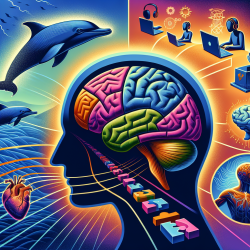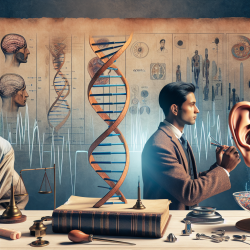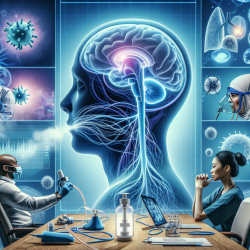Understanding Cetacean Brains: A Dive into Thermogenesis
As a Special Education Director, it's crucial to stay informed about the latest research that could impact educational practices, especially in specialized areas such as neuroscience. A recent study titled "Amplification of potential thermogenetic mechanisms in cetacean brains compared to artiodactyl brains" offers fascinating insights that can be leveraged to enhance educational strategies and therapy services, such as those provided by TinyEYE.
The Research at a Glance
The study explores the unique thermogenetic capabilities of cetacean brains, which include whales, dolphins, and porpoises. These marine mammals exhibit a remarkable ability to maintain brain temperature through non-shivering thermogenesis, a process that generates heat without muscle activity. The research highlights three key findings:
- Expanded expression of uncoupling protein 1 (UCP1) in cetacean cortical neurons, which are proteins that help dissipate the proton gradient to generate heat.
- Localization of UCP4 within a significant proportion of glial cells, indicating a specialized role in heat production.
- Increased density of noradrenergic axonal boutons, which play a role in activating UCPs and enhancing thermogenesis.
Implications for Practitioners
Understanding these mechanisms can inspire practitioners to think differently about brain function and adaptation. Here are a few ways educators and therapists can apply these insights:
- Encourage Further Research: This study invites further exploration into how thermogenesis could relate to cognitive functions and learning processes in other species, including humans. Encourage students and colleagues to delve into comparative neuroscience research.
- Adaptation Strategies: Consider how environmental adaptations, like those seen in cetaceans, can inform strategies for students with special needs. This could involve creating learning environments that are more attuned to individual sensory and cognitive needs.
- Innovative Therapy Approaches: For online therapy providers like TinyEYE, understanding the biological basis of brain function can lead to more tailored therapy sessions that consider the unique physiological and cognitive needs of students.
Networking and Collaboration
Networking remains a powerful tool for educational leaders. Sharing insights from studies like this one at conferences and webinars can foster collaborative discussions on how to integrate scientific findings into educational practices. This not only enhances professional development but also contributes to a broader understanding of how we can support diverse learning needs.
Legal and Compliance Considerations
As we explore new research and its applications, it's important to ensure that any new strategies comply with educational laws and standards. Keeping abreast of legal requirements ensures that innovations in educational practices are both effective and compliant.
Conclusion
The study on cetacean brain thermogenesis opens up exciting possibilities for educational and therapeutic practices. By understanding and applying these findings, we can continue to innovate and improve the ways we support learners with diverse needs.
To read the original research paper, please follow this link: Amplification of potential thermogenetic mechanisms in cetacean brains compared to artiodactyl brains.










